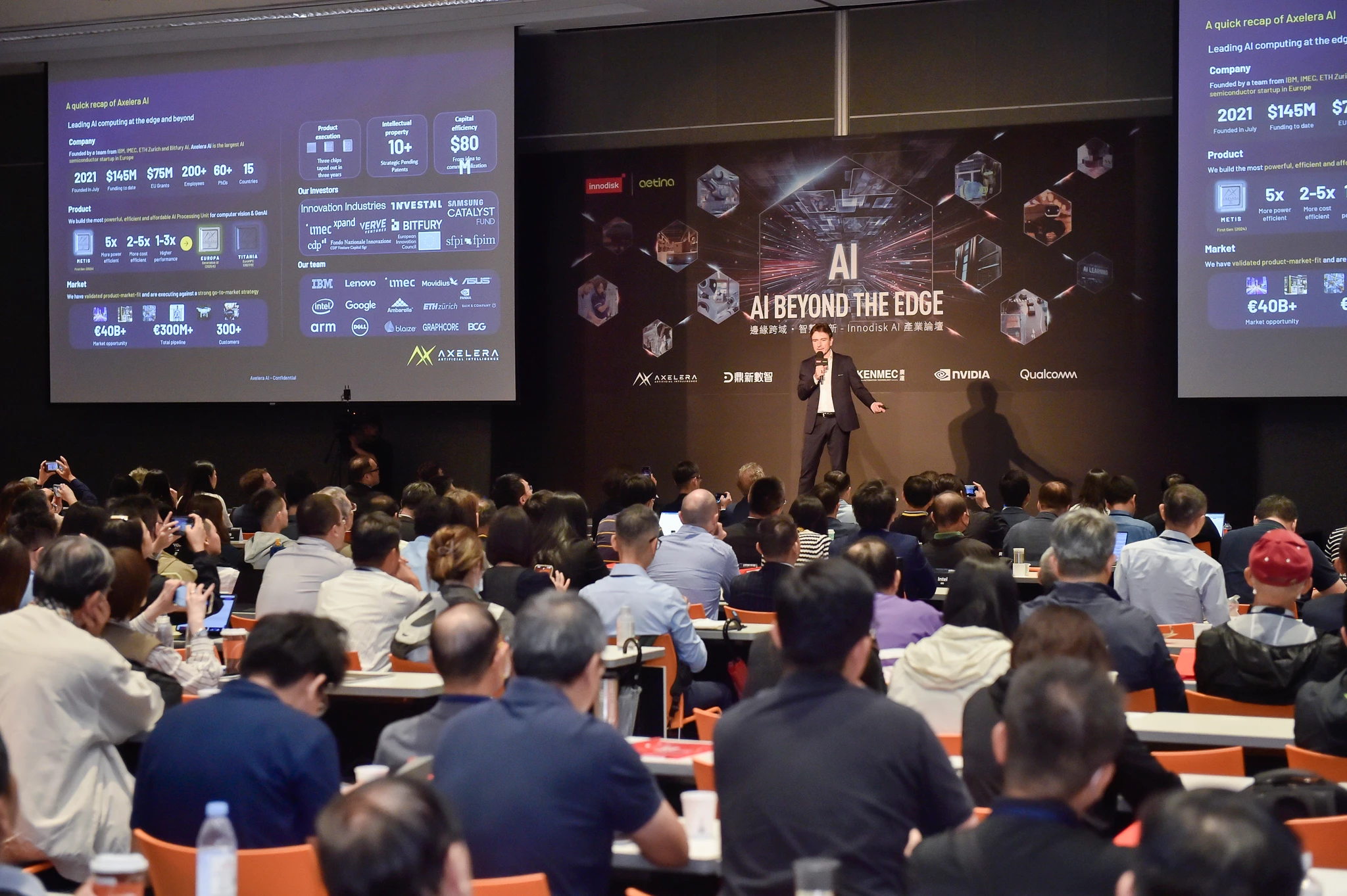The paradox: Enterprise AI adoption stands at 44.5% across U.S. businesses. The edge AI market is growing at 21.7% CAGR. Yet most companies remain stuck in pilot purgatory, unable to scale beyond proof-of-concept.
At last week's AI Beyond The Edge forum, Axelera AI CEO Fabrizio Del Maffeo addressed this head-on: "There's a massive disconnect between what everyone's talking about and what's actually working in the real world."
Here's what's really holding companies back.
The Infrastructure Doesn't Match the Requirements
The market is ready. AI compute costs have dropped from thousands to hundreds of dollars. Models are proven. But when companies try to deploy at scale, they hit the same walls:
Retail operators report that other edge setups can't handle the latest computer vision models. Hardware overheats in store environments or proves too costly to scale across thousands of locations.
Industrial customers face a painful choice: solutions that consume too much power (adding $500+ to monthly electricity bills per deployment) or hardware that thermally throttles under factory conditions.
Smart city planners calculate ROI and walk away. Processing 4K/8K video streams for traffic optimization and public safety has been prohibitively expensive with GPU solutions.
Agricultural and medical applications need 24/7 operation in challenging environments without breaking the budget on power costs. Most hardware can't deliver both reliability and efficiency.
The pattern is consistent across industries: what works in controlled lab environments fails in production.

Why Adapted Solutions Can't Solve Edge Problems
Del Maffeo's diagnosis: "Everyone's trying to shove cloud chips or mobile processors into edge applications. The underlying architecture just wasn't built for this job."
The technical reality: neural networks spend 70-90% of their time on matrix-vector multiplications, whether processing speech recognition, natural language, or computer vision. Traditional computer architectures constantly move data back and forth between memory and processing units.
For edge applications where every milliwatt matters, this approach wastes energy. You're spending most of your power budget on data movement rather than actual computation.
The result: Hardware that looks impressive on spec sheets but can't maintain performance in real-world conditions, at real-world power budgets, at prices that make deployment viable across hundreds or thousands of endpoints.
What Changes When Architecture Matches Workload
Axelera AI’s purpose-built edge AI architecture places memory and compute elements directly adjacent, dramatically reducing data movement. This isn't about being faster at everything. It's about being optimal for the operations that define modern AI workloads.
When architecture matches requirements, applications that were theoretically possible become economically practical:
Kitchen Monitoring (Food Service)
The challenge: Verify cook uniform compliance for up to 20 people per camera in real-time without adding staff.
What's now possible: Simultaneous processing at 45 FPS for person detection plus 900 FPS for uniform verification on a single edge device.
Business impact: Food safety compliance automation that actually works in commercial kitchen conditions.
Seed Sorting (Agriculture)
The challenge: Complete the entire cycle in 4ms total (image capture + AI processing + actuation decision).
Previous solutions: High-end GPUs like Nvidia RTX 4080 required 2.3ms for AI processing alone, failing to meet the requirement.
What purpose-built enables: 1.2ms AI processing, making the use case viable with margin for image capture and mechanical actuation.
Business impact: Throughput that justifies the equipment investment.
Manufacturing Quality Control
The challenge: Run multiple inspection models simultaneously across production lines without excessive power draw or thermal throttling.
What's now possible: Consistent performance in actual factory environments, processing multiple camera feeds in parallel.
Business impact: 30% reduction in quality issues with 50% lower inspection costs compared to manual processes.
High-Resolution Smart City Applications
The challenge: Process 4K/8K video streams from multiple cameras for people detection, tracking, and traffic analysis.
What's now possible: Multi-core architecture and a robust SDK that handles high-definition streams without requiring prohibitive infrastructure investment.
Business impact: ROI that makes municipal deployment viable rather than aspirational.
What This Means for Your Evaluation Process
If your edge AI pilot didn't scale, the problem likely wasn't your use case or your team's capabilities. It was probably the hardware.
Three questions to reconsider:
- Were your ROI calculations based on hardware built for cloud or mobile, then adapted for edge? If so, your performance and power assumptions may have been optimistic by 3-5x.
- Did your pilot succeed in the lab but fail in production conditions? Thermal performance under sustained load in real environments often differs dramatically from spec sheets.
- Was the per-unit cost acceptable for 10 devices but prohibitive for 1,000? Hardware that wasn't designed for edge economics from the ground up rarely scales to production volume pricing.
The gap between AI potential and AI deployment is closing, but only for organizations evaluating purpose-built infrastructure rather than adapted solutions.
Next week: Why performance and cost aren't the only considerations. The strategic dimension most companies are missing when evaluating edge AI infrastructure.
Evaluate your edge AI strategy:
- Technical resources: github.com/axelera-ai-hub/voyager-sdk
- Community discussion: community.axelera.ai

